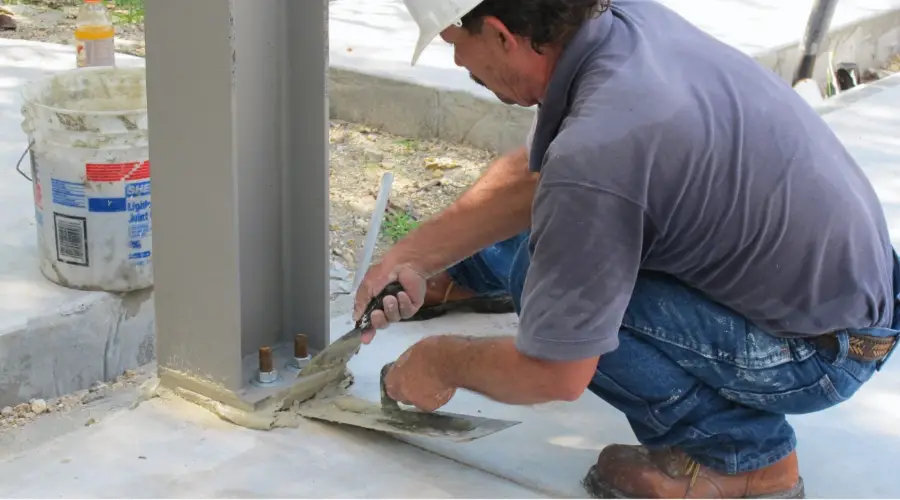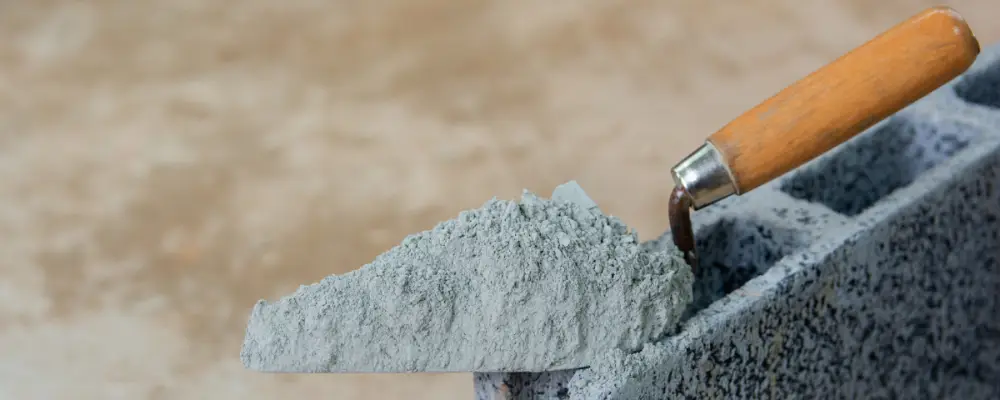Cement is one of the most widely used materials in the construction industry all over the world. Its popularity has enabled new advancements to be made everyday, allowing enhancement of its properties. One such new cementitious material is GP2 cement. Let us see the common uses, benefits, and applications of GP2 cement in construction.
Overview of GP2 Cement
General Purpose cement, or GP2 cement, is a high-performance, non-shrink grout cement specifically designed for grouting applications in construction projects that demand high strength, durability, and low shrinkage. It is a careful blend of Portland cement, graded fillers, and chemical additives that ensure controlled expansion in the plastic state while minimising water demand. This low water demand contributes to achieving high early strength. The graded fillers are designed to promote uniform mixing, resulting in a consistent and reliable grout. It comes ready to use in a pre-mixed form. Due to the grout’s remarkable compressive and flexural strength, it is a great choice for applications requiring a sturdy foundation. Its free-flowing qualities and gaseous expansion system guarantee ideal contact with load-bearing surfaces, providing improved support and effective load transfer.
Key Features of GP2 Cement
These are some of GP2 cement’s salient characteristics:
High compressive and flexural strength: GP2 cement has a high compressive and flexural strength for providing sturdy foundations.
Non-shrink: The concrete mixture won’t shrink between the base plate and substrate, due to the specific formulation of GP2 cement.
Low water demand: High early strength is guaranteed by the low water demand of GP2 cement.
Mixing uniformly: GP2 cement’s graded fillers contribute to the consistency of the grout.
Extreme weather, chemical, and water resistance: GP2 cement has outstanding bonding qualities and can stick to a variety of surfaces.
Absence of metallic iron: The absence of metallic iron in GP2 cement might result in discolouration.
Prepackaged substance: GP2 cement is pre-packed to prevent batching differences on-site.
Common Uses of GP2 Cement

Beyond anchoring and precise grouting, GP2 cement is adaptable and appropriate for a variety of uses. These include:
- GP2 cement ensures a solid foundation for the heavy rotor and tower structures in wind turbine installations. A solid foundation is essential for maintaining stability, reducing vibrations, and withstanding dynamic loads caused by wind forces during turbine operations.
- GP2 is a great option for grouting bridge bearings because of its strong compressive and flexural strength, which guarantees even load distribution.
- GP2 cement provides a safe and sturdy footing for large machinery and equipment, making it perfect for grouting beneath machine base plates.
- The grout is appropriate for supporting railway track foundations due to its toughness against dynamic loads, which reduces vibrations and provides a solid foundation.
- GP2 cement provides a sturdy, long-lasting, and secure base for heavy-duty cranes and hoists.
- To ensure safe and sturdy connections, GP2 cement can be used to fill in the spaces between precast concrete parts. When building walls, floors, and other structural elements that require high-strength joints, this is especially helpful.
- For concrete surfaces that have deteriorated or been damaged, GP2 cement is a dependable repair material that restores structural integrity and offers long-lasting defence against more damage.
- GP2 cement increases the stability and load-bearing capacity of masonry walls, columns, and other structural elements when combined with reinforcement bars or other structural elements.
- Due to its high strength, adaptability, and longevity, GP2 cement is an essential component for contemporary building and repair projects.
How to Use GP2 Cement for Construction?
Use these application methods to get the most out of GP2 cement:
Preparation:
To get rid of any dirt, oil, grease or any loose particles, scrub the surface. The binding may be weakened if the platform is not solid, pristine, and devoid of any impurities.
Mixing and Placing:
While mixing the grout, make sure to follow the instructions directed by the manufacturer to attain the proper water-to-powder ratio. The grout must cover the whole cavity and make complete contact with the platform as you pour the mixture into the formwork.
Curing:
During the initial curing time, shield the grouted surface from wind, rain, and direct sunshine. Before applying any loads, it is imperative to give the grout enough time to cure.
When using GP2 cement, keep the following limitations in mind:
Low Temperature Conditions: In low temperatures, the setting time and strength development may slow down, necessitating extended curing periods.
High-Temperature Conditions: In high temperatures, the setting time accelerates, reducing the working time. To mitigate this, consider using chilled water during mixing.
Advantages of Using GP2 Cement
GP2 offers some significant benefits over conventional grouting solutions, including:
Gaseous Expansion System: In the grout’s plastic form, GP2 cement makes up for settling and shrinkage. This indicates that any potential micro-voids or gaps are filled by the grout’s modest expansion as it sets.
Non-Metallic Composition: GP2 cement is free from metallic iron which ensures no corrosion or discolouration. This makes it appropriate for long-term uses.
Pre-Packed Material: Provided as pre-packed material to ensure consistent quality and performance by removing onsite batching inconsistencies.
High Early Strength: Provides a solid and reliable foundation by achieving high early strength without the usage of chlorides.
Outstanding Ultimate Strength: Provides a high level of ultimate strength, guaranteeing the hardened grout’s lifetime and durability.
Free-Flowing Properties: Excellent flow for optimal contact with load-bearing areas is ensured by free-flowing properties, which improve load transfer and support.
Conclusion
In conclusion, GP2 cement is used for all kinds of grouting applications in construction. Its remarkable flexibility and compressive strength make it an ideal choice for constructing solid foundations. Consistent grout can be made by uniform mixing. The free flow property of GP2 cement ensures a high level of contact with heavy load-bearing areas. All its properties and special features make it an excellent choice for modern building and construction projects.
FAQ’s
Although GP2 cement is not made especially for use underwater, it can be appropriate in some circumstances if the right preparation and safety measures are taken. For specialised underwater application advice, it is recommended to consult with the manufacturer or a technical specialist.
Indeed, GP2 cement is designed to support both static and dynamic loads, which makes it the perfect option for applications requiring a sturdy and dependable foundation under a range of loading circumstances.
GP2 cement normally lasts for around 12 months after manufacturing if kept in its original container in a cold, dry, and well-ventilated location.

